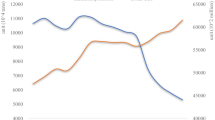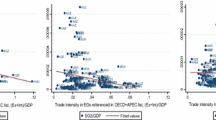Abstract.
This paper provides an assessment of the impact of increased economic integration within North America on industrial pollution intensities within the Great Lake states of the United States. It utilizes a three-country, applied general equilibrium model of the North American economy, data from the World Bank's Industrial Pollution Projection System, and employment data from the US Bureau of Economic Analysis to simulate the industrial pollution impacts of North American trade liberalization within the Great Lakes region. The results reflect the liberalization of tariff and non-tariff barriers, their trade and production impacts, state-level shares in the production changes, and the resulting industrial effluent changes. Two trade liberalization experiments show that, in many cases, the Great Lake states account for a substantial portion of the total emission changes caused by North American economic integration. Of particular concern to the Great Lake states are the emissions of the base metals, transportation equipment, and petroleum sectors.
Similar content being viewed by others
Author information
Authors and Affiliations
Additional information
Received: October 2001/Accepted: December 2001
This research was supported by the Office of the Great Lakes through the Michigan Great Lakes Protection Fund. We would like to thank Roger Stough and three referees for very helpful comments.
Rights and permissions
About this article
Cite this article
Reinert, K., Rodrigo, G. & Roland-Holst, D. North American economic integration and industrial pollution in the Great Lakes region. Ann Reg Sci 36, 483–495 (2002). https://doi.org/10.1007/s001680200088
Issue Date:
DOI: https://doi.org/10.1007/s001680200088




